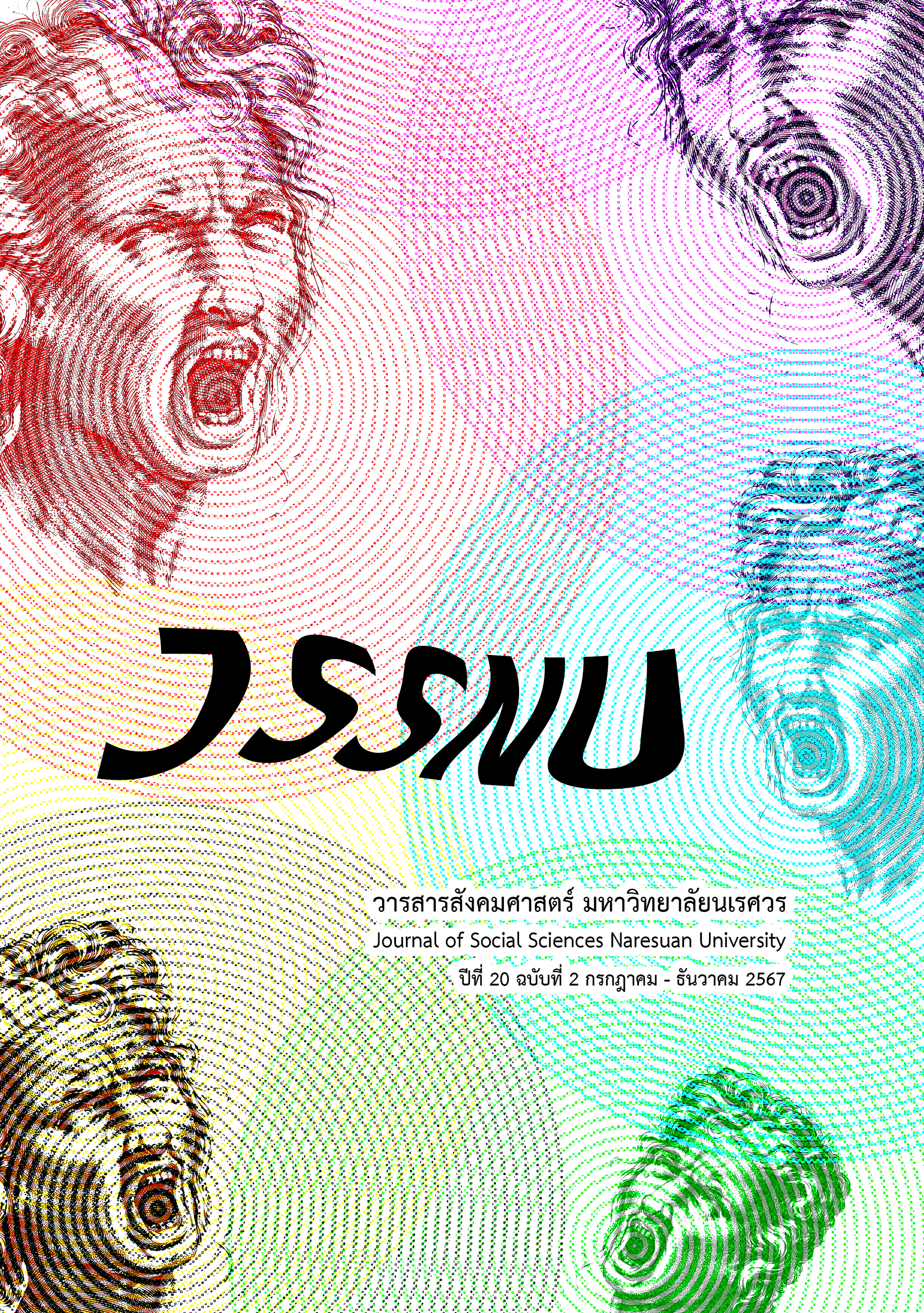บันทึกการเดินทางของอ็องรี มูโอต์: ประวัติศาสตร์ธรรมชาติ การเดินทางสำรวจ และภาษาของจักรวรรดิ
Main Article Content
บทคัดย่อ
บทความวิจัยเรื่องนี้มีวัตถุประสงค์เพื่อศึกษาบันทึกการเดินทางเพื่อการสำรวจทางวิทยาศาสตร์ในเขตบริเวณดินแดนตอนในของสยาม กัมพูชา และลาวของนักสำรวจชาวฝรั่งเศส อ็องรี มูโอต์ โดยเป็นการศึกษาในเชิงประวัติศาสตร์ บทความมีข้อเสนอว่าการขยายตัวของการศึกษาประวัติศาสตร์ธรรมชาติในคริสต์ศตวรรษที่ 18 ทำให้เกิดการเดินทางในรูปแบบใหม่ที่มีเป้าหมายเพื่อวิทยาศาสตร์โดยตรง และทำให้ อองรี มูโอต์ได้ทุนสำหรับโครงการสำรวจตอนในของสยาม กัมพูชา และลาว ซึ่งเป็นการสำรวจเพื่อศึกษาสภาพภูมิศาสตร์ ทรัพยากร และผู้คนในดินแดนตอนใน รวมทั้งเก็บรวบรวมตัวอย่างพันธุ์พืชและพันธุ์สัตว์เพื่อส่งให้กับสมาคมผู้ให้ทุนสนับสนุน ในขณะที่บันทึกการเดินทางของมูโอต์ ซึ่งสัมพันธ์กับโครงการประวัติศาสตร์ธรรมชาติของยุโรป นำเสนอการมีอำนาจของยุโรปเหนือดินแดนอื่น ๆ ของโลกในเชิงความมีมนุษยธรรมที่บริสุทธิไร้ความผิด แทนที่การเข้าพิชิตยึดครองโดยใช้ความรุนแรง ซึ่งถูกทำให้ไร้ความชอบธรรมหลังการปฏิวัติฝรั่งเศส
Downloads
Article Details

อนุญาตภายใต้เงื่อนไข Creative Commons Attribution-NonCommercial-NoDerivatives 4.0 International License.
เอกสารอ้างอิง
Chanseang, K. (2012). Chotmaihet Henri Mouhot lae Chotmaihet Le Comte Ludovic de Beauvoir [The accounts of Henri Mouhot and Le Comte Ludovic de Beauvoir]. In S. Patranuprawat, S. Siripaisan, O. Kamsorn, & T. Virakietsuton (Eds.), 100 ekkasan samkan: Subpasara prawatisat thai lamdapthi 20 (in Thai). [100 significant documents: assorted stories in Thai history volume 20] (pp. 29-61). Bangkok: Sakdisopa kanpim.
Department of Fine Art. (2014). Tamroi bantuk choa thang chat chak aou sayam su lamnam chaopraya (in Thai). [Following the records of the foreigners from the Gulf of Siam to Chaopraya river]. Bangkok: Department of Fine Art.
Drayton, R. (2000). Nature’s government: Science, imperial Britain, and the “Improvement” of the world. New Haven, Conn.: Yale University Press.
Farber, P. L. (2000). Finding order in nature: The naturalist tradition from Linnaeus to E.O. Wilson. Baltimore, Md: Johns Hopkins University Press.
Latour, B. (1987). Science in action: How to follow scientists and engineers through society. Cambridge Mass: Harvard University Press.
MacLean, G. (2019). Early modern travel writing (1): Print and early modern European travel writing. In N. Das & T. Youngs (Eds.), The Cambridge history of travel writing (pp. 62-76). Cambridge: Cambridge University Press.
Mouhot, H. (1864). Travels in the Central Parts of Indo-China (Siam), Cambodia, and Laos, during the years 1858, 1859, and 1860, 2 vols. London: John Murray.
Mouhot, H. (2015). Bantuk kan dernthang kong Henri Mouhot nai sayam, kampucha, lao lae indochin thonklang suan auen auen (in Thai). [Travels of Henri Mouhot in Siam, Cambodia, Laos, and the central parts Indo-China]. (K. Chanseang, Trans.). Bangkok: Matichon.
Mouhot, H., & Hodgkin, T. (1862). Notes on Cambodia, the Lao Country, & c. The Journal of the Royal Geographical Society of London, 32, 142-163.
Pratt, M. L. (1992). Imperial eyes: Travel writing and transculturation. London: Routledge.
Robinson, M. F. (2019). Scientific travel. In N. Das & T. Youngs (Eds.), The cambridge history of travel writing (pp. 488-503). Cambridge: Cambridge University Press.
Rooney, D. F. (1998). In the footsteps of Henri Mouhot: A French explorer in 19th Century Thailand, Cambodia, and Laos. SPAFA Journal, 8(1), 5-16.
Schouteden, O. J.-F. (2018). Imperial spectacles: Spatial visions of French Indochina in Henri Mouhot’s and Noé Filoz’s exploration accounts. GeoHumanities, 4(2), 504-521. https://doi.org/10.1080/2373566X.2018.1472024
Thompson, C. (2011). Travel writing. London: Routledge.
Thompson, C. (2019). Nineteenth-century travel writing. In N. Das & T. Youngs (Eds.), The cambridge history of travel writing (pp. 108-124). Cambridge: Cambridge University Press.
Ungeng, N., Suebwattana, T., & Chanseang, A. (2016). Esan lae lao nai thassana kong naksamruad chao farangset chak raingan kansamruad nai puttasatawat thi 25 (puttasakarat 2401-puttasakarat 2446) (in Thai). [I-san and Laos from French explorer’s point of views, 1858-1903]. Journal of Humanities and Social Sciences Mahasarakham University, 35(1), 12-21.


